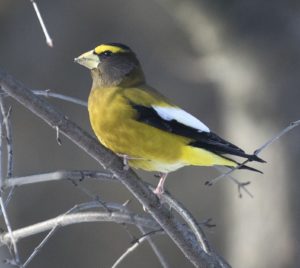What’s happening with the birds this winter? Have fun counting birds and helping NH Audubon at the same time. Take part in the annual Backyard Winter Bird Survey on Saturday, February 11, and Sunday, February 12. Biologists need assistance from citizens all over the Granite State to get a clear picture of what is happening with our winter birds.
Anyone can participate in the Survey by counting the birds in their own backyard on the Survey weekend and reporting online or sending the results on a special reporting form to NH Audubon. To receive a copy of the reporting form and complete instructions, email your name and address to bwbs@nhaudubon.org or call 603-224-9909. Forms are also available online or results can be submitted online.
Find more information about the Survey

The Survey was originally started to monitor the increase in southern species which were expanding their range northward. The Northern Cardinal and Tufted Titmouse were the first species to move in and the Survey shows they are still increasing in our northern-most county, Coos County. Other species are following in their footsteps including Carolina Wrens which hit a record high on the 2022 Survey. Red-bellied Woodpeckers, a southern woodpecker, had their second-highest tally. “Cold winters can impact these species,” said NH Audubon’s Dr. Pamela Hunt, “so we look to the Survey data to tell us if that happens.” Reports from across the state are critical to providing adequate data on these southern species as well as all our other winter birds.
“We also watch the data for declining species,” said Hunt. “Evening Grosbeak numbers hit a record low last winter, but early reports this fall indicate they may be rebounding.” Their population appears to be linked to the spruce-budworm outbreak in Canada. The last time they were abundant in the northeast was in the 1970s and 1980s when there was a budworm outbreak in the northern New England and southeast Canada.
Each year 1,500 observers or more across the state count the birds coming to their feeders.
Reports of a lack of birds are just as valuable as reports of many birds. “If everyone reported only when they have a lot of birds, we wouldn’t be able to see the declines,” says Rebecca Suomala, Survey Coordinator. The most important thing is to participate each year regardless of how many or how few birds you have. Data from the Backyard Winter Bird Survey help biologists track changes in the distribution and abundance of our year round resident birds. Results from past years can be found on the web site.
